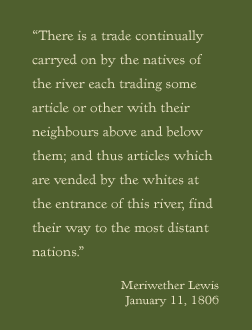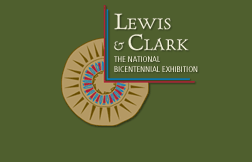


INTRODUCTION TO UNIT
Target Grade Level:
Elementary, Grades 4 - 6
Trade and Property is a unit consisting of five lessons and a culminating project. The main goal of this unit is that students understand aspects contributing to successful trade interactions between two parties. The unit examines the property of both Lewis and Clark and the Chinook tribes through use of primary and secondary sources. Students will discover the nature of the trade relationship between these two groups. Students will apply their understanding of trade concepts as they design a product that offers advice to traders who will follow in the footsteps of Lewis and Clark.
Explore Connections to Today for this unit.
MAJOR UNDERSTANDING
A good deal is in the eye of the beholder.
ESSENTIAL UNIT QUESTIONS
- What makes a good deal?
- How do different people define wealth?
KEY KNOWLEDGE OBJECTIVES
Students will:
- list various reasons people trade
- define the following economic terms: trade, barter, goods, services, and scarcity
- know that value given to property is defined differently by different societies
- know that cultural differences affect the value placed on trade and objects of trade
- describe three indicators of wealth among the Chinook Indians
- describe elements of a successful trade using the relationship between Lewis and Clark and the Chinook as an example
- show several different purposes trading serves
- explain the concept of a trade network
KEY SKILL OBJECTIVES
Students will:
- compare and contrast Chinook perspective on wealth to Euro-American perspectives on wealth
- compare and contrast Chinook view of trade to a Euro-American view using a Venn diagram
- gather and analyze data from primary-source materials
FORMATIVE ASSESSMENT SUGGESTIONS
- written response
- Venn diagram
- analogy
- teacher notes
- constructed responses
[PRINTABLE VERSION]
|






